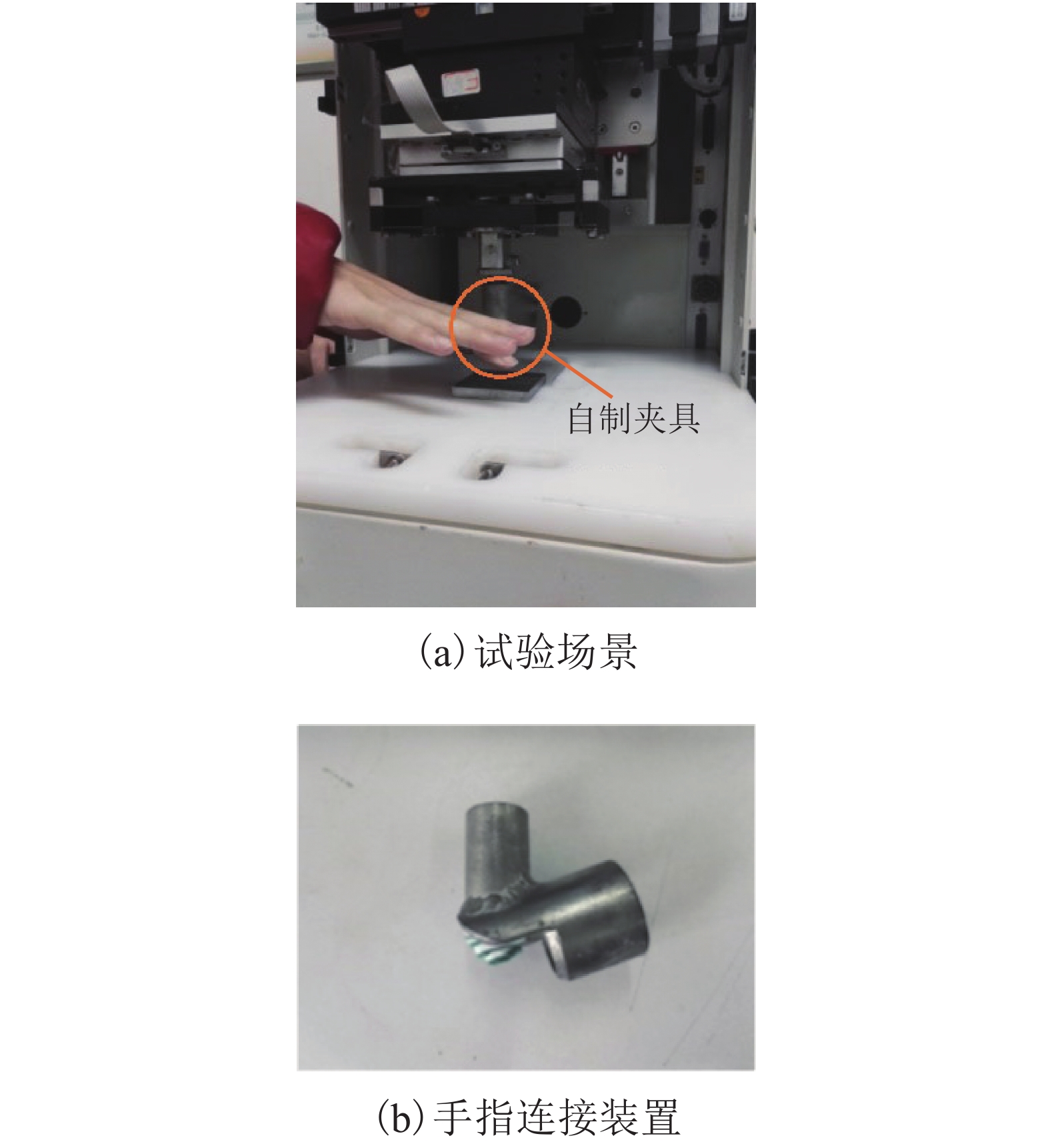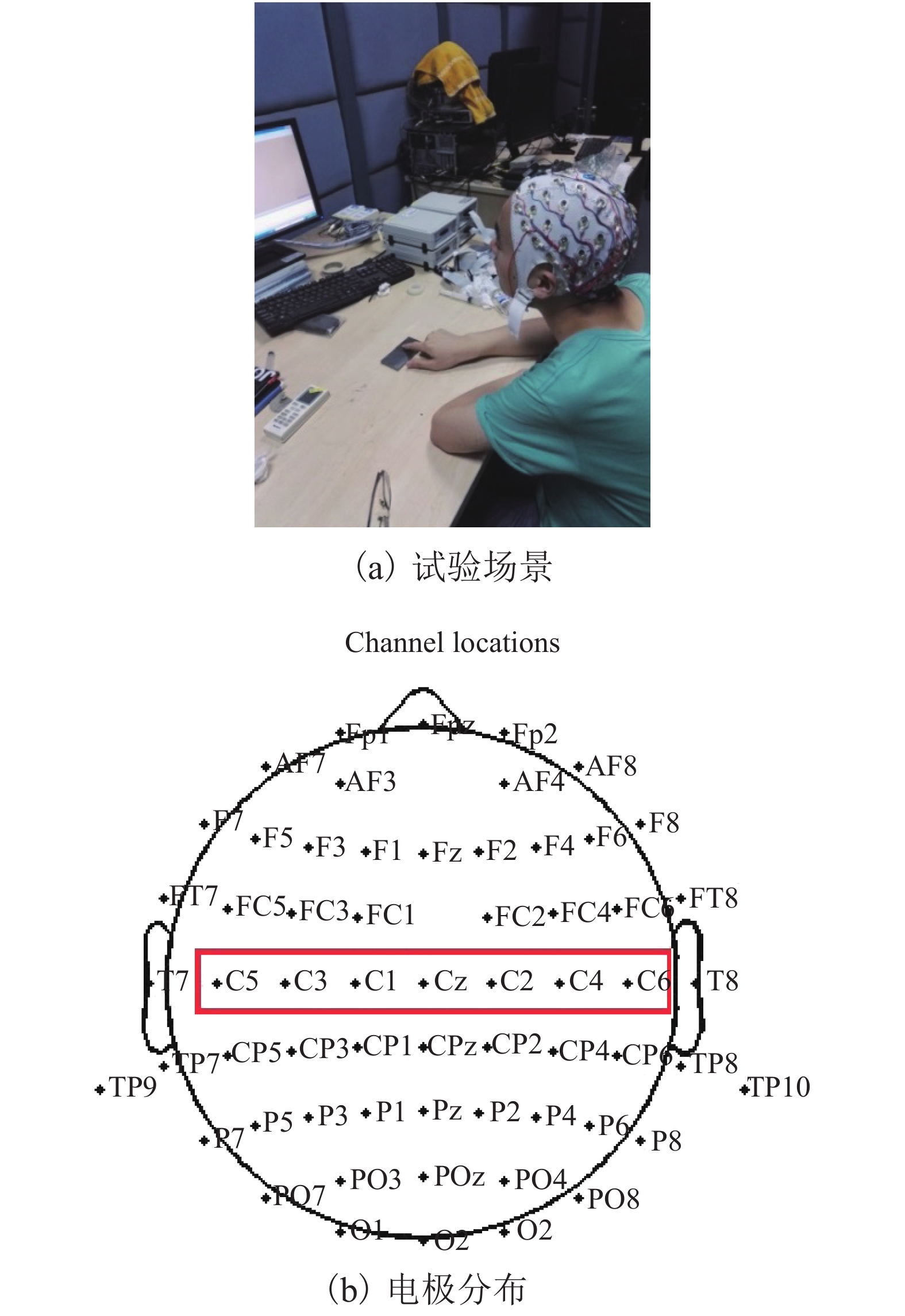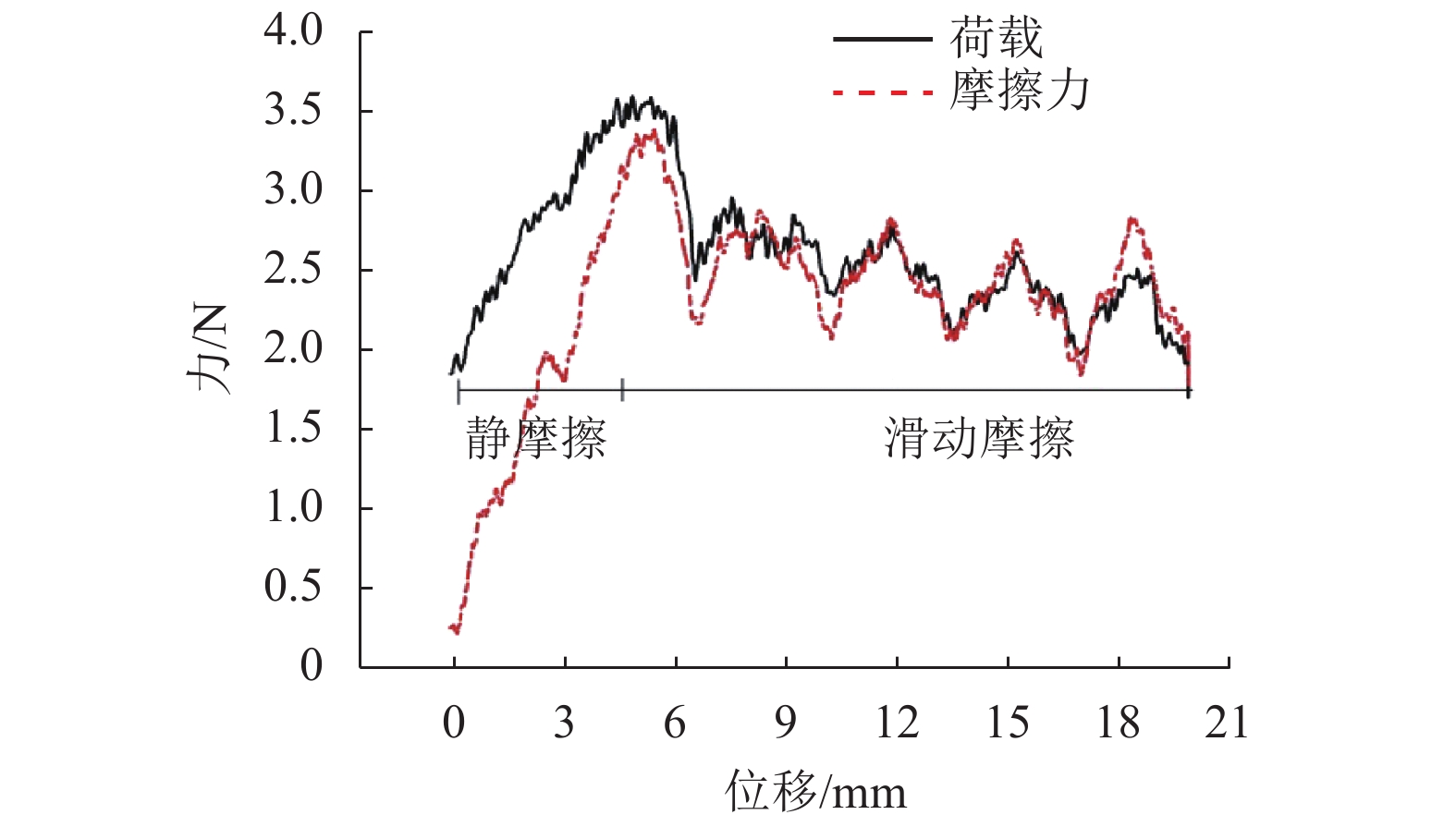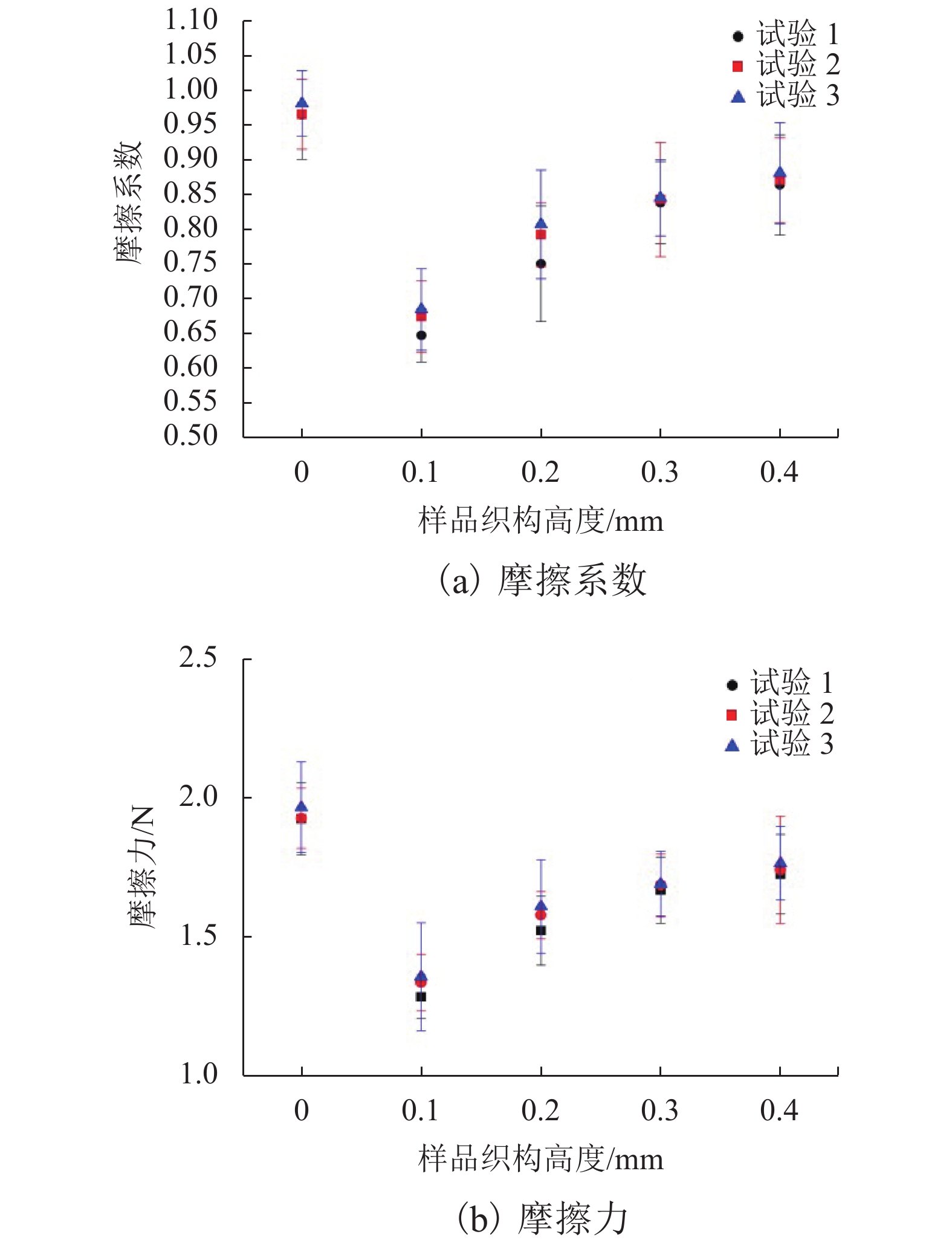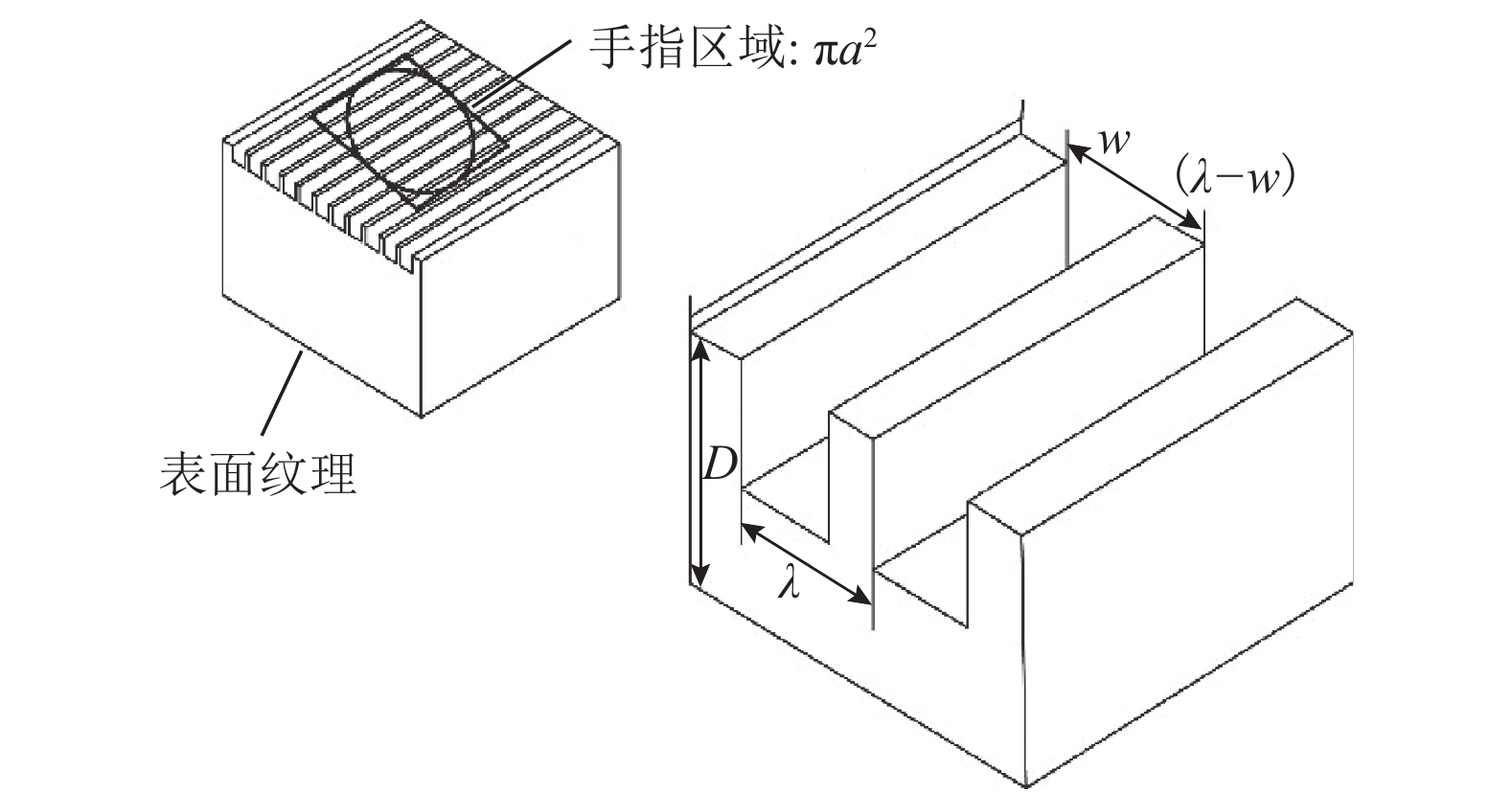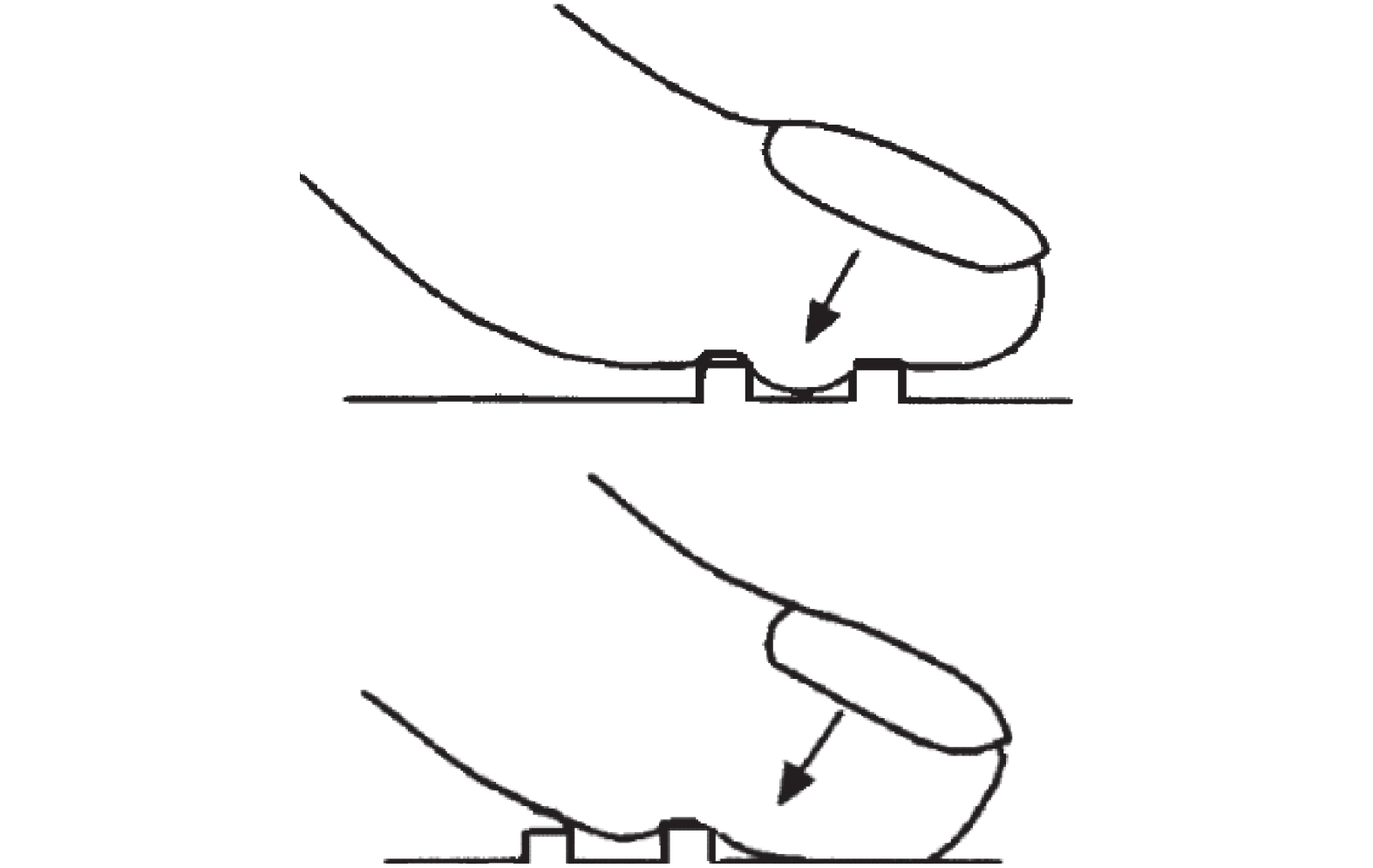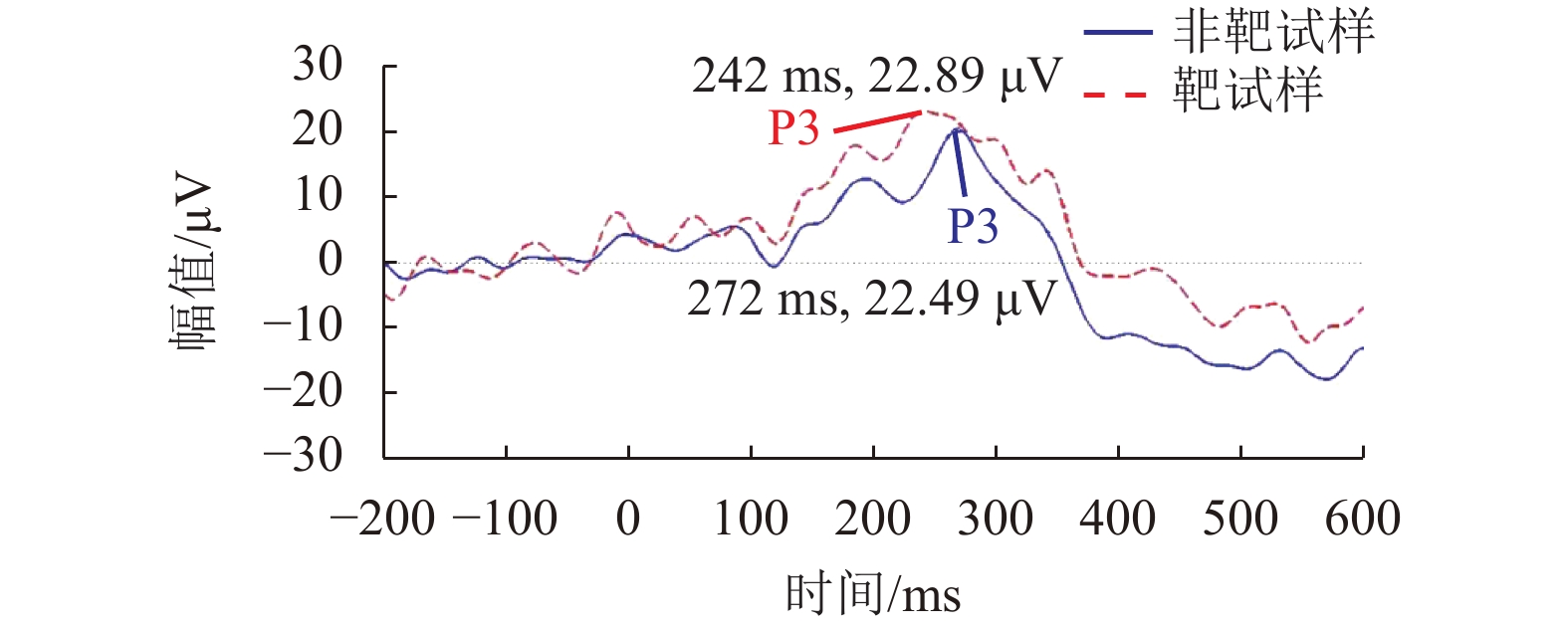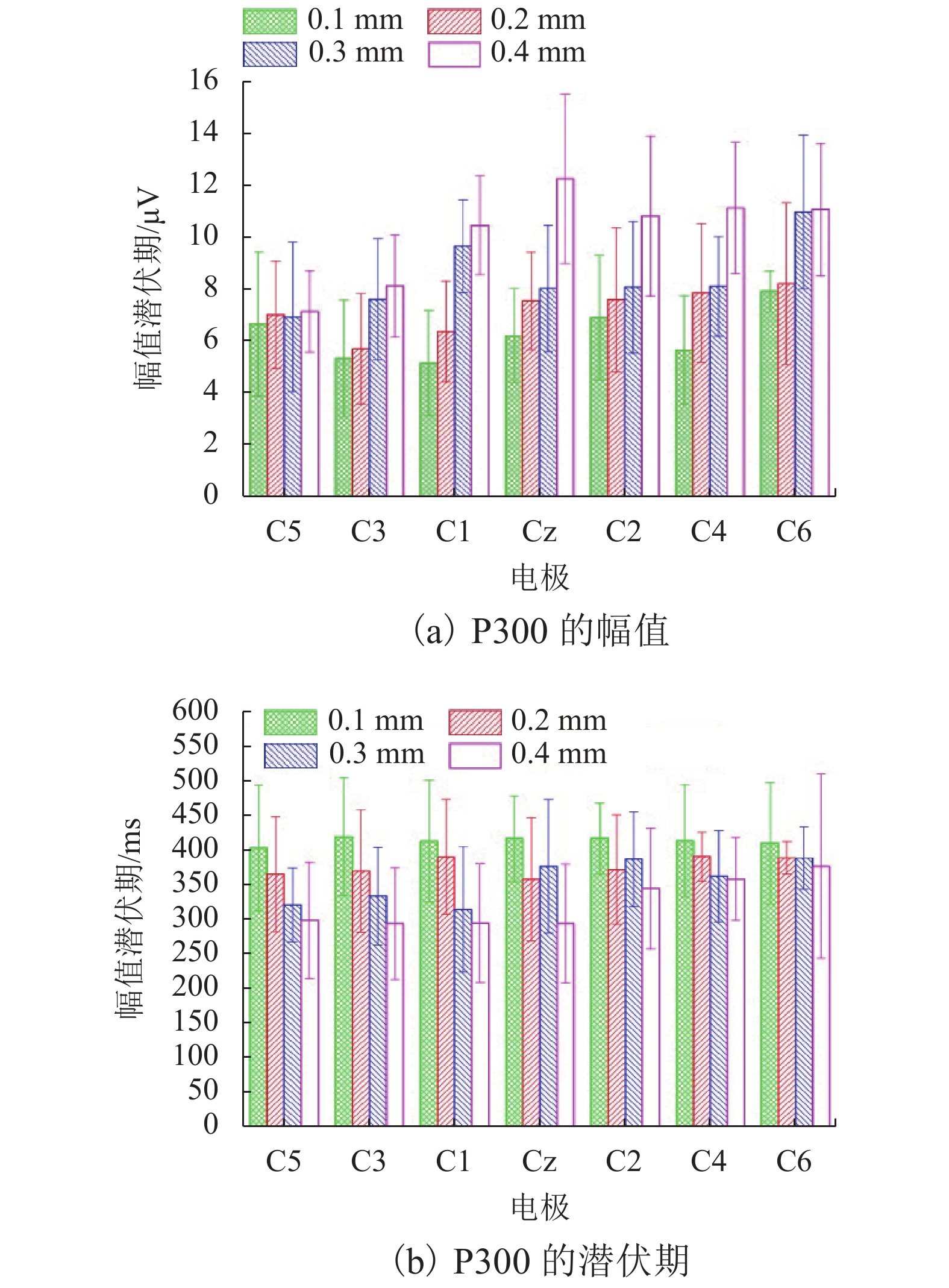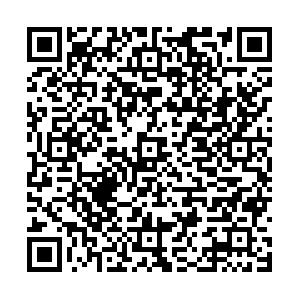Influence of Surface Feature Height of Deterministic Texture on Tactile Perception of Fingertip
-
摘要: 为了揭示人体触觉感知的基本机理和规律,首先通过机械物理学中的摩擦磨损分析,研究了确定性纹理表面特征高度对指尖皮肤摩擦行为的影响;其次通过心理学测试手段,得到与摩擦行为相关的认知成分P300的潜伏期与波幅;最后综合两者的测试结果,研究了指尖皮肤摩擦行为与触觉感知之间的关系. 研究结果表明:手指皮肤与粗糙度较大的确定性纹理表面摩擦接触时,摩擦力主要由黏着摩擦力、滞后摩擦力和互锁作用力组成;手指皮肤的触觉感知与摩擦作用有较强的相关性;表面织构粗糙度从0.1增加到0.4时,指尖皮肤变形量从2.356增加至2.941,手指皮肤变形造成的滞后摩擦与互锁作用越明显;纹理特征高度大的样本诱发的P300潜伏期小, 峰值大,感知明显,纹理特征高度小的样本与之相反,说明皮肤摩擦感知主要取决于与皮肤变形直接相关的滞后摩擦和互锁作用.Abstract: In order to reveal the basic mechanism and law of the tactile perception of human body, first of all, the influences of the surface feature height of deterministic texture on the fingertip skin friction behavior were studied through friction and wear analysis in mechanical physics. Secondly, by means of psychological test, the latent period and amplitude of P300, a cognitive component related to the friction behavior, were obtained. Finally, combining the test results of both, the relationship between skin friction behavior of fingertips and tactile perception was studied. The results show that the friction force is mainly composed of adhesive friction, hysteresis friction and interlock force when the finger skin is in contact with the deterministic texture surface with large roughness. There is a strong correlation between the tactile perception of finger skin and the friction effect. When the surface texture increase from 0.1 to 0.4, the skin deformation of fingertips increase from 2.356 to 2.941, the hysteresis friction and inter locking effect caused by skin deformation of fingers become more obvious. The samples with large texture feature height induce P300 with small latency, large peak and obvious perception, while the samples with small texture feature height are the opposite, which indicate that skin friction perception mainly depend on the hysteresis friction and interlocking effects directly related to skin deformation.
-
Key words:
- skin /
- tribology /
- tactile perception /
- texture height /
- ERP
-
表 1 表面脊状特征几何参数
Table 1. Geometrical parameters of surfaces
μm 样本 间距 宽 高 1 0 0 0 2 3 200 200 100 3 3 200 200 200 4 3 200 200 300 5 3 200 200 400 表 2 手指接触应力与接触情况
Table 2. Contact stress and contact conditions of finger tip and contact surface
高度/mm p1/MPa p2/MPa 接触情况 0.1 0.012 3 完全 0.2 0.036 8 0.024 5 完全 0.3 0.036 8 完全 0.4 0.049 1 不完全 表 3 手指在压缩力为2 N(± 0.05 N)作用下接触各样品时产生的变形位移
Table 3. Displacement of each sample at compression force of 2 N (± 0.05 N)
mm 表面织构高度 0.0 0.1 0.2 0.3 0.4 手指变形 2.058 ± 0.097 2.356 ± 0.025 1 2.554 ± 0.134 2.654 ± 0.057 2.941 ± 0.072 -
曹建国,周建辉,缪存孝,等. 电子皮肤触觉传感器研究进展与发展趋势[J]. 哈尔滨工业大学学报,2017,49(1): 1-13. doi: 10.11918/j.issn.0367-6234.2017.01.001CAO Jianguo, ZHOU Jianhui, MIAO Cunxiao, et al. Research progress and development strategy on tactile sensors for e-skin[J]. Journal of Harbin Institute of Technology, 2017, 49(1): 1-13. doi: 10.11918/j.issn.0367-6234.2017.01.001 王其才,于伟东,陈克敏,等. 织物刺激的人体触觉感知及其大脑认知研究[J]. 国际医学放射学杂志,2014(4): 323-327. doi: 10.3874/j.issn.1674-1897.2014.04.Z0403WANG Qicai, YU Weidong, CHEN Kemin, et al. Fabric tactile perception and its brain functional research[J]. International Journal of Medical Radiology, 2014(4): 323-327. doi: 10.3874/j.issn.1674-1897.2014.04.Z0403 BARNES C J, CHILDS T H C, HENSON B, et al. Surface finish and touch—a case study in a new human factors tribology[J]. Wear, 2004, 257(7/8): 740-750. MESSAOUD W B, BUENO M A, LEMAIRE-SEMAIL B. Relation between human perceived friction and finger friction characteristics[J]. Tribology International, 2016, 98: 261-269. doi: 10.1016/j.triboint.2016.02.031 张冰玉. 手指皮肤摩擦感知功能研究[D]. 成都: 西南交通大学, 2014. 陈思,葛世荣,时晓露,等. 摩擦诱发的事件相关电位认知成分特征研究[J]. 摩擦学学报,2015,35(5): 538-542.CHEN Si, GE Shirong, Shi Xiaolu, et al. Perception component of event related potentials evoked by friction[J]. Tribology, 2015, 35(5): 538-542. MORLEY J W, GOODWIN A W, DARIAN-SMITH I. Tactile discrimination of gratings[J]. Experimental Brain Research, 1983, 49(2): 291-9. FAGIANI R, BARBIERI M. A contact mechanics interpretation of the duplex theory of tactile texture perception[J]. Tribology International, 2016, 101: 49-58. doi: 10.1016/j.triboint.2016.03.031 JERRAMS S J. Friction and adhesion in rigid surface indentation of nitrile rubber[J]. Materials & Design, 2005, 26(3): 251-258. ADAMS M J, BRISCOE B J, JOHNSON S A. Friction and lubrication of human skin[J]. Tribology Letters, 2007, 26(3): 239-253. doi: 10.1007/s11249-007-9206-0 JOHNSON K L, GREENWOOD J A, HIGGINSON J G. The contact of elastic regular wavy surfaces[J]. International Journal of Mechanical Sciences, 1985, 27(6): 383-396. doi: 10.1016/0020-7403(85)90029-3 MENGA N, PUTIGNANO C, CARBONE G, et al. The sliding contact of a rigid wavy surface with a viscoelastic half-space[J]. Proceedings of the Royal Society a Mathematical Physical & Engineering Science, 2014, 470: 20140392-1-20140392-16. DONCHIN E, ISREAL J B. Event-related potentials and psychological theory[J]. Progress in Brain Research, 1980, 54: 697-715. doi: 10.1016/S0079-6123(08)61692-1 MAENO T, KOBAYASHI K, YAMAZAKI N. Relationship between the structure of human finger tissue and the location of tactile receptors[J]. JSME International Journal, 2008, 41(2): 56-73. -




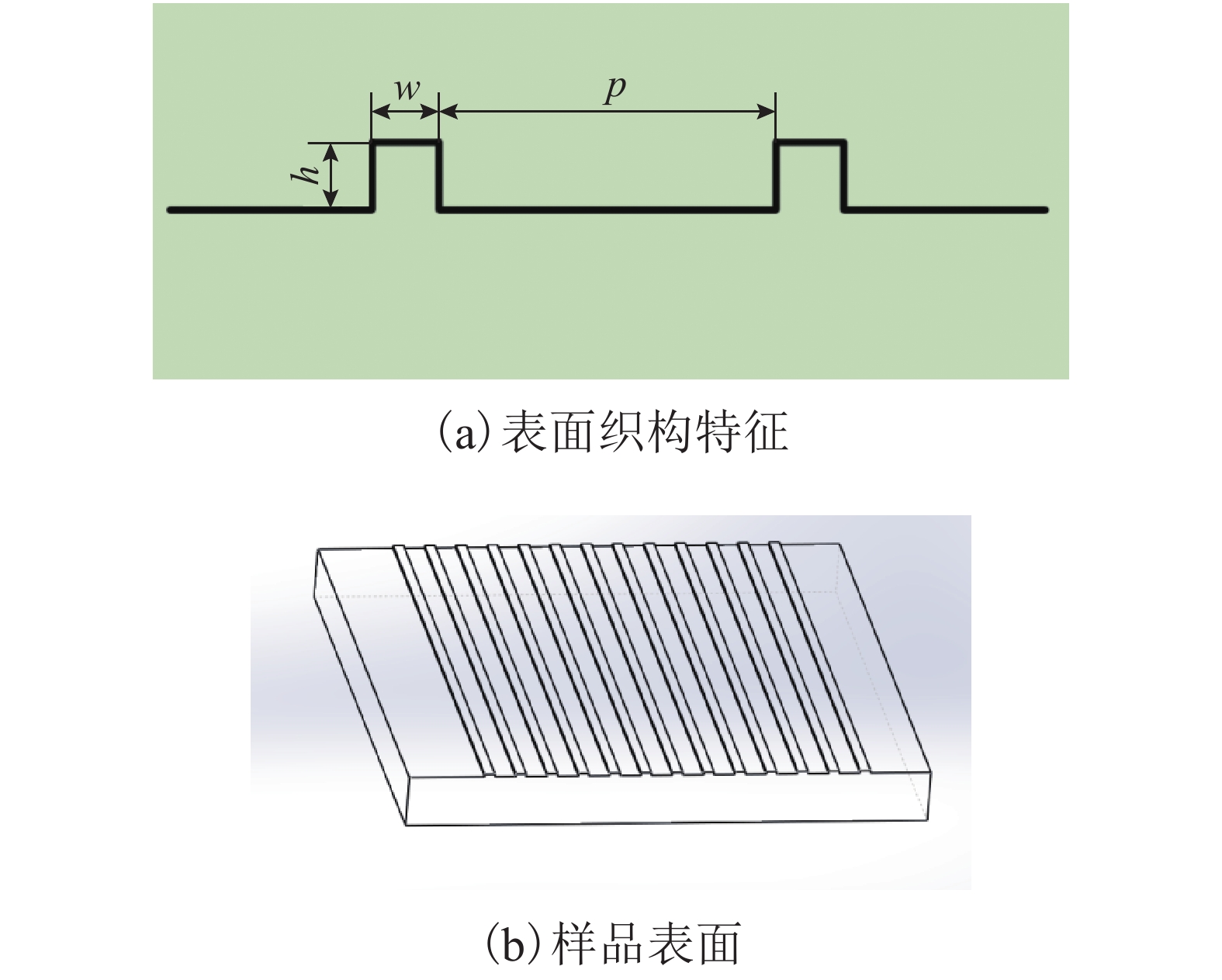
 下载:
下载:
